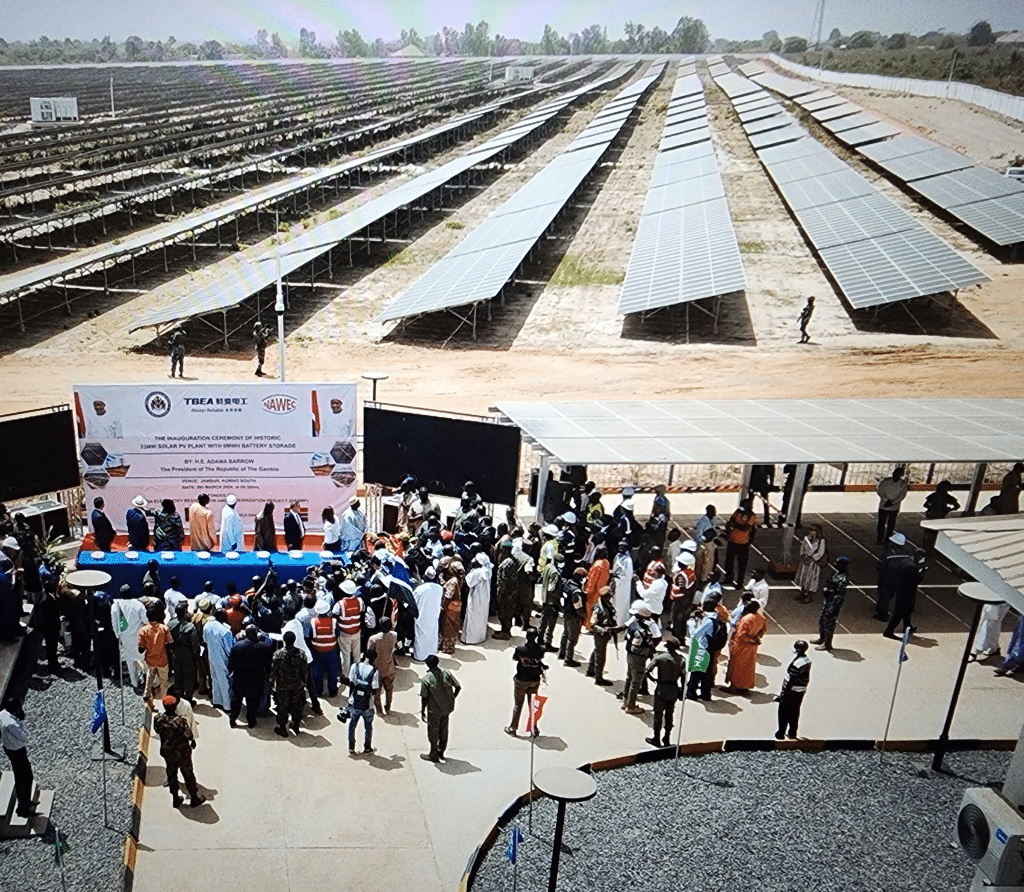With demand for electricity in the Gambia jumping by 5.5% in recent years, President Adama Barrow inaugurated one of the flagship components of his Gambia Electricity Rehabilitation and Modernisation Project (GERMP) on 25 March, in the presence of representatives of several development partners. The project involves the Jambur photovoltaic solar power plant, the construction of which Afrik 21 announced would be launched in early 2023.
Today the President of The Republic of The Gambia , His Excellency Adama Barrow inaugurated the historic 23MW solar plant with 8MWH battery storage in Jambur, Kombo North, West Coast Region. pic.twitter.com/viyrJopkmB
— Ministry of Petroleum and Energy The Gambia (@MoPEGambia) March 9, 2024
In one full year, the Chinese company Tebian Electric Apparatus (TBEA) has built and tested the new plant, which has a capacity of 23 MWp, with an 8 MWh electricity storage system. In his speech at the inauguration ceremony, President Adama Barrow pointed out that the Jambur solar park aims to “significantly reduce Gambia’s dependence on imported fossil fuels for electricity generation. The project also aims to accelerate the country’s transition to a 50% supply of electricity from renewable energy sources by 2030”.
Decarbonising electricity
Currently, the Gambia’s total installed electricity capacity is just over 100 MW, with actual generation levels of around 40 MW and excess demand levels of 50 MW. Prior to the commissioning of the Jambur solar plant, all the electricity distributed in this West African country was generated from fossil fuels, notably diesel and fuel oil.
Read also- GAMBIA: FAO installs 34 solar irrigation systems for 6,600 farmers
For this reason, the new solar power plant “unequivocally demonstrates the country’s determination to reduce its carbon footprint and green its energy system. Moreover, as a source of clean energy and a major vector for mitigating climate change, the solar power plant will help to ensure Gambia’s nationally determined contribution”, said President Barrow.
EU support
This declared political will should therefore enable the GERMP to continue, which focuses among other things on supplying “clean, sustainable and environmentally friendly energy to 1,000 schools and 100 health facilities in rural areas of the country that are not connected to electricity”, says the European Investment Bank (EIB), which has been supporting the project since it was launched in 2018.
The EIB is the project’s biggest lender, providing €65 million. The European Union (EU) is also contributing $40 million. The World Bank is contributing €36 million through its subsidiary, the International Development Association (IDA).
Jean Marie Takouleu
